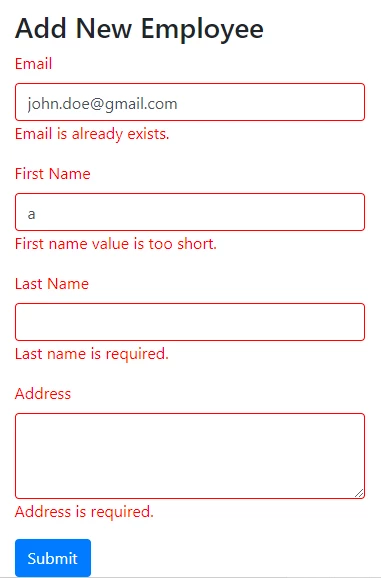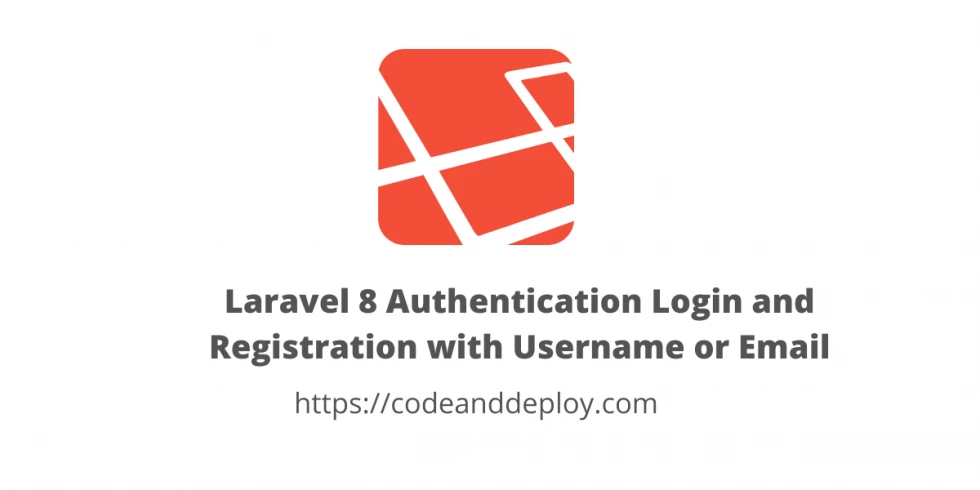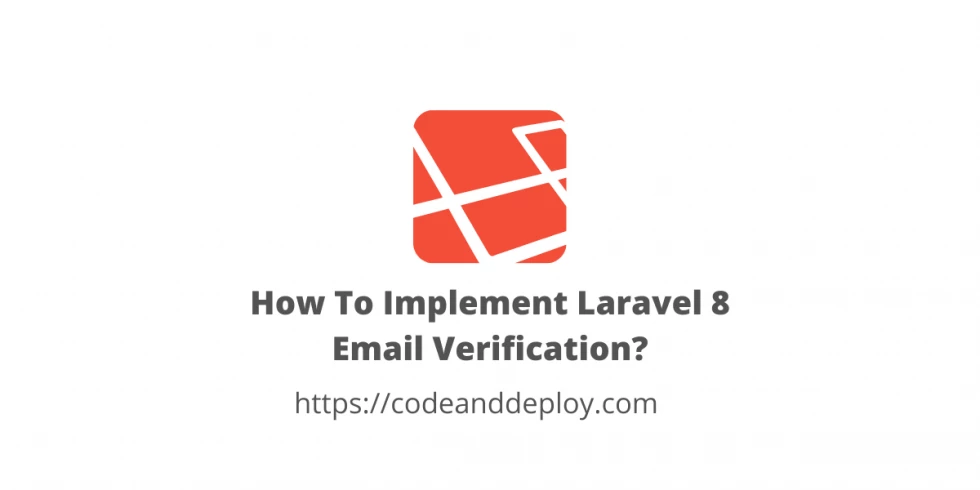Dynamic Ajax Form Validation in PHP & MySQL using jQuery
In this post, I will show you how to create an ajax form validation in PHP & MySQL using jQuery. In my previous tutorial, I created a Simple Dynamic Form Validation Function Using PHP just click it to know more about it. So now I will display the error response from the server-side then show it in every form field.

In this post, I will show you how to create an ajax form validation in PHP & MySQL using jQuery. In my previous tutorial, I created a "Simple Dynamic Form Validation Function Using PHP" just click it to know more about the PHP function. So now I will display the error response from the server-side then show it in every form field. So here is the example result:

CSS Form Validation Styles
Form validation style code using CSS. You will see this code inside assets/css/styles.css when you download the complete code.
/*Form Validation Error Styles*/
.form-group.error label,
.form-group.error .error-message {
color: red;
}
.form-group.error .form-control {
border: 1px solid red;
}JS Form Validation Function
In this section, I will show you the actual code of my jquery/javascript function with comments so that you understand how I code it.
Before I will show you the code I will show you first the sample error JSON Array response from the server.
{
"email":{
"required":"Email is required."
},
"first_name":{
"required":"First name is required."
},
"last_name":{
"required":"Last name is required."
},"address":{
"required":"Address is required."
}
}Then below is my complete function to process the server form validation response.
/**
* A validation form function that will parse the json array and display to each fields
*
* @param {string} selector - The form selector
* @param {json} errors - The json array response from the server form validation
* @return {any}
*/
function validationForm(selector, errors)
{
// Loop the form errors
$.each(errors, function(fieldName, fieldErrors)
{
$.each(fieldErrors, function(errorType, errorValue) {
var fieldSelector = selector + " [name='"+fieldName+"']";
// Check if the ".form-group" class has still ".error" class
// Then remove the ".error-message" element
// Then rmove the ".error" class at ".form-group" class
// To prevent element error duplication
if($(fieldSelector).parents(".form-group").hasClass("error")) {
$(fieldSelector).parents(".form-group").find(".error-message").remove();
$(fieldSelector).parents(".form-group").removeClass("error");
}
// Insert error message after the textbox element
// Then add class ".error" to ".form-group" class for style needed
$("<p class='error-message'>"+errorValue+"</p>")
.insertAfter(fieldSelector)
.parents(".form-group").addClass('error');
// Remove error message on keyup by the textbox
$(fieldSelector).on("keyup", function() {
$(fieldSelector).parents(".form-group").find(".error-message").remove();
$(fieldSelector).parents(".form-group").removeClass("error");
});
});
});
}Code Implementation
Since I already show the function now it's time to implement it in actuality. So here is the code on how to implement it.
function save()
{
$("#btnSubmit").on("click", function() {
var $this = $(this); //submit button selector using ID
var $caption = $this.html();// We store the html content of the submit button
var form = "#form"; //defined the #form ID
var formData = $(form).serializeArray(); //serialize the form into array
var route = $(form).attr('action'); //get the route using attribute action
// Ajax config
$.ajax({
type: "POST", //we are using POST method to submit the data to the server side
url: route, // get the route value
data: formData, // our serialized array data for server side
beforeSend: function () {//We add this before send to disable the button once we submit it so that we prevent the multiple click
$this.attr('disabled', true).html("Processing...");
},
success: function (response) {//once the request successfully process to the server side it will return result here
response = JSON.parse(response);
// Check if there is has_error property on json response from the server
if(!response.hasOwnProperty('has_error')) {
// Reload lists of employees
all();
// We will display the result using alert
Swal.fire({
icon: 'success',
title: 'Success.',
text: response.response
});
// Reset form
resetForm(form);
} else {
// We will display the result using alert
validationForm("#form", response.errors);
}
$this.attr('disabled', false).html($caption);
},
error: function (XMLHttpRequest, textStatus, errorThrown) {
// You can put something here if there is an error from submitted request
}
});
});
}As you can see above code I have the save() function to store record but if the server found an error then it will not completely save it and response an error array which I parse it as JSON in client-side. As you can see in the ajax success() function I have a condition to check if the response has not JSON property "has_error" but if the "has_error" property exists then it will continue to else which we call the validatationForm() function with each parameter.
So that's pretty much it. I hope you learn from it. If you want to show it in action just hit the "Download" button below. Don't forget to share this with your friend if you think this post is helpful.
Thank you for reading. Happy Coding :)











Leave a Comment